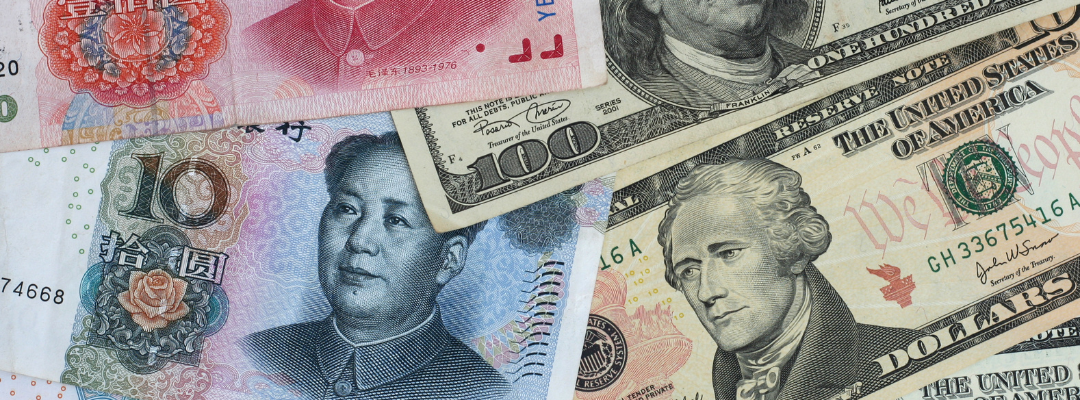In 2022, China’s total food and agricultural imports reached a record $218 billion, compared to its agricultural exports of $70 billion making China the largest net importer of food and agricultural products by a considerable margin. China’s 2022 import levels follow on the footsteps of retaliatory tariff increases in 2018 and 2019, the Economic and Trade Agreement between the United States of America and the People’s Republic of China (Phase One that entered into force on February 14, 2020), and the Covid-19 pandemic. While the two-year Phase One agreement (2020-2021) fell short of the purchase commitments China agreed to, its agricultural imports from the U.S. soared to record levels in 2022, and the share of China’s agricultural imports sourced from the U.S. has recovered to levels at or near the pre-trade war era.
Figure 1 shows the value of China’s agricultural imports from its top nine export suppliers and an aggregate rest-of-world (ROW) region (left vertical axis, $ Billion, area graph). China’s imported a record $40.8 billion of food and agricultural products from the U.S. in 2022, up from $38 billion in 2021, and nearly twice the $22.6 billion China imported from the U.S. in 2017 prior to trade dispute and Phase One trade agreement. China’s food and agricultural imports from the U.S. are more than double its imports from the EU-27 but trail China’s record agricultural imports from Brazil valued at $52.5 billion in 2022. Together, Brazil and the United States supply 43% of China’s total food and agricultural imports.
However, comparing nominal trade values through time can lead to misleading conclusions, especially when commodity trade values are subject to considerable price inflation later in the sample period. Starting in mid-late 2021, commodity prices spiked following poor weather conditions in North and South America, the U.S. dollar appreciated, Central Banks began raising interest rates, and an overall inflationary environment took hold. Commodity prices surged to new highs following Russia’s invasion of Ukraine on February 24, 2022, before returning to their pre-invasion levels more recently. For example, global wheat prices increased by over 60 percent from February 24 to June 1, 2022 compared to average wheat prices prior to the invasion.
If food price inflation is a global phenomenon (i.e. not specific to an individual country), then an alternative metric by which to judge China’s record import values is to compute the share of China’s imports from the U.S. in 2022 relative to the pre-trade war period. Given inflationary pressure in 2022 that impacted most food and agricultural products, market shares allow us to evaluate whether the U.S. has regained its market share standing following a turbulent five years of commodity trade. The dashed lines in the figure trace the share of China’s agricultural imports from the U.S. (black) and Brazil (green) and are illustrated on the secondary right vertical axis. While U.S. market share in China’s food and agricultural imports was on a downward trend since 2012, it fell precipitously in 2018 and 2019 to 12% and 10%, respectively. Brazil’s market share in China increased from 21% in 2017 to 27% in 2018 but has remained stable in the 22-24% range since then. Conversely, U.S. market share has recovered significantly in 2021 and 2022 to 18% and 19% of China’s total agricultural imports and is about equal to its share in 2017, prior to the US-China trade dispute. Overall, the rapid surge in U.S. market share in China since 2019, and stable market shares of Brazil and other competing exporters suggests, relatively speaking, that China has been importing more from the U.S. in 2021 and 2022.
Figure 1. China’s Agricultural Import Values from its Top 10 Export Suppliers, and the Market Share of China’s Imports Sourced from the U.S. and Brazil

Figure Note: Source: Author Calculations from Trade Data Monitor. Left vertical axis are in $ Billion. Right vertical axis are percentage market shares. Data are from China’s reported imports throughout.
Grant, Jason H. “U.S. Agricultural Exports to China Soar and Market Share Returns to Pre-Trade War Levels.” Southern Ag Today 3(28.4). July 13, 2023. Permalink


